As a child, I devoured the thickest books I could find.
My logic was simple: the bigger the book, the longer I got to live in that world with those characters. The longer I could postpone returning to my own reality. I’d scan library shelves not for interesting covers or compelling summaries, but for spine width. Give me your thousand-page epics, your multi-volume sagas, your stories that promised to keep me somewhere else for as long as possible.
Books were my escape routes. My hiding places. My proof that other worlds existed beyond the suffocating walls of the Kingdom Hall.
But what happens when you grow up and realize that escape isn’t enough anymore? What happens when you need to write the books that don’t let you escape, that grab you by the shoulders and force you to look at what you’ve been running from?
What happens when you stop writing fantasy to avoid reality and start writing fantasy to expose it?
The Books That Changed Everything
The books that saved my life weren’t the ones that let me forget my pain. They were the ones that looked directly at it and said, “Yes, this happened. Yes, it was wrong. Yes, you’re allowed to be angry about it.”
They were few and far between, those books that didn’t shy away from the truth. The ones that portrayed trauma with unflinching honesty, that showed abuse without romanticizing it, that let their characters be messy and broken and furious. The ones that didn’t rush to easy healing or pretty endings.
Those books, few as they were, are the ones I never forgot. They haunt my memory. They whisper to me on bad days: Someone else knows. Someone else survived this. You’re not alone in what you carry.
I think about them still, decades later. Not because they were comfortable reads, but because they were witnesses. They saw what others refused to acknowledge. They spoke what others demanded stay silent.
And now, with The Chosen Chronicles, I’m trying to write those books for someone else. To be that rope thrown into dark water, that voice saying: I see you drowning. Here, grab on.
When The Mirror Becomes The Page
Let me be honest about something that might be a dealbreaker for some readers: The Chosen is essentially my autobiography dressed in fantasy clothes.
Mira Roehart’s journey through religious indoctrination, systematic abuse, and the long road to reclaiming her power? That’s my story with different names and void magic instead of dissociation. Marrying someone sadistic and abusive because you genuinely believed you had no other choice? Her best friend disappearing into zealous devotion? The systematic dismantling of every support system until compliance seems like the only option?
I lived it. I’m still living the aftermath of it.
This was a massive risk. Taking the rawest parts of my experience and putting them on a page where strangers could judge them, misunderstand them, or worse—recognize them. But here’s why I did it anyway:
Because when you see these patterns in fantasy, you can’t dismiss them as easily. When you watch Mira being systematically isolated by Lucien, you can say with clarity: “This is wrong. She needs to get out.” When you see her forced into marriage through spiritual coercion, you recognize it as abuse even when it’s wrapped in religious language.
And maybe—just maybe—someone reading it will think: Wait. This happened to me too. But I didn’t realize how wrong it was. I thought it was normal.
Fantasy gives us the distance to see patterns we’re too close to recognize in our own lives. It lets us practice recognizing abuse in a “safe” setting before we have to confront it in reality. It validates experiences by showing them in a context where their wrongness is undeniable.
The Four-Book Journey (That Started As One)
Originally, The Chosen Chronicles was going to be one massive book. A thousand-page epic that would have made younger me proud—the kind of tome that promises weeks of escape.
But as I wrote, I realized this story was too heavy to carry all at once. Both for me as the writer and for you as the reader. So it became four books, each with its own emotional arc, its own purpose in the larger journey:
Book One: The Chosen – The systematic destruction of self through religious extremism. This is where we witness the cage being built, bar by bar, until escape seems impossible. Complete at 67,000 words, this is the hardest book to read because it’s the hardest truth to tell.
Book Two: The Forsaken – Currently at 45,000+ words and growing, this is about what happens when you finally run. The messy, complicated reality of escape when you’re pregnant, traumatized, and being hunted by the very people who claim to love you.
Book Three: The Village – This is the book I’m most excited about because it’s not about fighting or running; it’s about thriving. Five years of Mira and young Kai (ages 3-8) living in magical sanctuary, learning what family really means, discovering heritage, and finding that healing isn’t linear but spiral. We return to old wounds with new strength.
Book Four: The Return – Eighteen years after it all began, Mira and teenage Kai stop running. Not from a place of rage, but from a place of power. This is about choosing when to fight back, and doing it not for revenge but for protection of others.
The eighteen-year span matters. Healing doesn’t happen in a training montage. You don’t go from victim to warrior in three chapters. Sometimes the greatest victory is simply surviving long enough to see your children grow strong enough to fight battles you couldn’t win alone.
(And yes, for those who want the full immersive experience, there will eventually be an omnibus edition with all four books. For those brave enough to carry that weight all at once.)
The Chapters That Nearly Broke Me
I need to be transparent about something: there are chapters in these books that are genuinely difficult to read. Chapters 16-19 of The Chosen contain explicit depictions of marital rape and the psychological aftermath. These aren’t gratuitous. They’re necessary to understand Mira’s journey, but they’re real in ways that might be triggering.
There were points where I had to stop writing. Where I had to walk away from my laptop and make music instead, letting melodies carry what words were too heavy to hold. Where I had to push through trauma responses just to finish a scene and remember that I survived what I was putting on the page.
The hardest parts to write weren’t the dramatic moments: the public Forsakings, the explosive magic, the narrow escapes. The hardest parts were the quiet violations. The systematic gaslighting. The slow erosion of self. The confusion when your body responds to abuse in ways that make you feel complicit.
These are the parts most fantasy glosses over. The parts that get summarized as “and then bad things happened” before moving on to the revenge plot.
But my belief, my bone-deep conviction, is that these truths need to be portrayed correctly. Not sensationalized, not romanticized, not sanitized, but witnessed with the full weight they deserve.
For Every Survivor Who Needs To Feel Seen
My hope is that I did the reality of these traumas justice. That I didn’t write anything in a way that was offensive or harmful or inaccurate. Most of this writing has come from pure lived experience—I pulled those feelings from my own memories, my own body’s stored trauma, my own nightmares.
But there are some things I had to imagine. Things that didn’t happen to me but happened to people I love, people who trusted me with their stories. For those parts, I had to ask myself: What would this feel like if it had happened to me? How would I have felt? How would I have moved on and healed? What would that even look like?
So I hope I did those topics justice. I hope that survivors reading these books feel seen rather than exploited. I hope the portrayal of dissociation during assault helps someone understand their own response. I hope the long, slow journey of recovery validates someone who’s been told they should be “over it” by now.
Why Every Success Feels More Earned
One of the things I love most about this series is how we live inside Mira’s head. These books are so integrated with her psychology and inner thoughts that reading them is like experiencing trauma and recovery from the inside out. You don’t just watch her story; you feel it happening in your own nervous system.
This makes the heavy parts heavier. When Lucien manipulates her, you feel the confusion in your own mind. When she dissociates, you float above the scene with her. When she breaks, something in you fractures too.
But it also makes every success feel more earned.
When Mira finally manifests her void powers and escapes, you feel that triumph in your bones because you know, truly know, what she survived to get there. When she bonds with her son despite his origin, you understand the profound courage that requires. When she eventually stops running and turns to face her abuser, you know exactly how much strength eighteen years of healing has built.
These aren’t hollow victories. They’re triumphs weighted with truth.
The Books I Needed To Exist
I’m not writing The Chosen Chronicles to escape reality anymore. I’m writing them to drag reality into the light, dress it in fantasy clothes, and force us all to look at what we’ve been taught to ignore.
These books are for the girl I used to be, searching library shelves for something thick enough to hide in. But more than that, they’re for who she became: someone who needed stories that didn’t let her hide, that validated her experience, that said: This happened. It was wrong. And you’re allowed to be furious about it.
They’re for every survivor who’s been told their story is too dark, too complicated, too uncomfortable for mainstream fiction. For everyone who’s been asked to sanitize their experience for palatability.
They’re for those still trapped, who might recognize their own situation in Mira’s story and finally have words for what’s happening to them.
They’re for those who’ve escaped but still carry the weight, who need to see that healing is possible but it’s not quick or linear or pretty.
Most of all, they’re the books I needed to read when I was drowning. The rope I’m throwing back to others still in that dark water.
This Is Why I Write
Some people write to entertain. Some write to educate. Some write to escape.
I write to witness.
To say: This happened. It happens still. It’s happening right now to someone reading these words.
To say: You survived something that should have killed you, and that matters.
To say: Your story doesn’t have to have a pretty ending to be worthy of telling.
To say: Sometimes the most powerful magic is simply surviving long enough to tell the truth about what tried to destroy you.
The Chosen Chronicles isn’t an easy read. It wasn’t easy to write. It won’t let you escape into comfortable fantasy where good always triumphs and healing happens overnight.
But if you can get through the darkness—if you can witness Mira’s pain and stay with her anyway—the light on the other side feels real. Earned. True.
Because that’s how healing actually works. Not in dramatic moments of vengeance, but in small acts of courage accumulated over years. Not in choosing light over dark, but in finding power in the spaces between.
This is why I’m writing these books. Not to help anyone escape reality, but to prove that reality—even the darkest parts—can be survived, examined, and ultimately transformed into something powerful.
Even if that transformation takes eighteen years and four books to complete.
Even if some chapters make us both cry.
Even if the truth is harder to tell than any fantasy I could invent.
The Covers That Hold These Truths
I’d be lying if I said I wasn’t excited to have an excuse to make more book covers, which is exactly what needed to happen when I decided to split my massive tome into four books.
Each cover became its own meditation on what that particular book was trying to say. I spent hours thinking about the symbolism, the colors, the mood. How do you capture systematic destruction in one image? How do you show healing that takes years? How do you illustrate the moment someone stops running and turns to fight?
The Chosen Chronicles
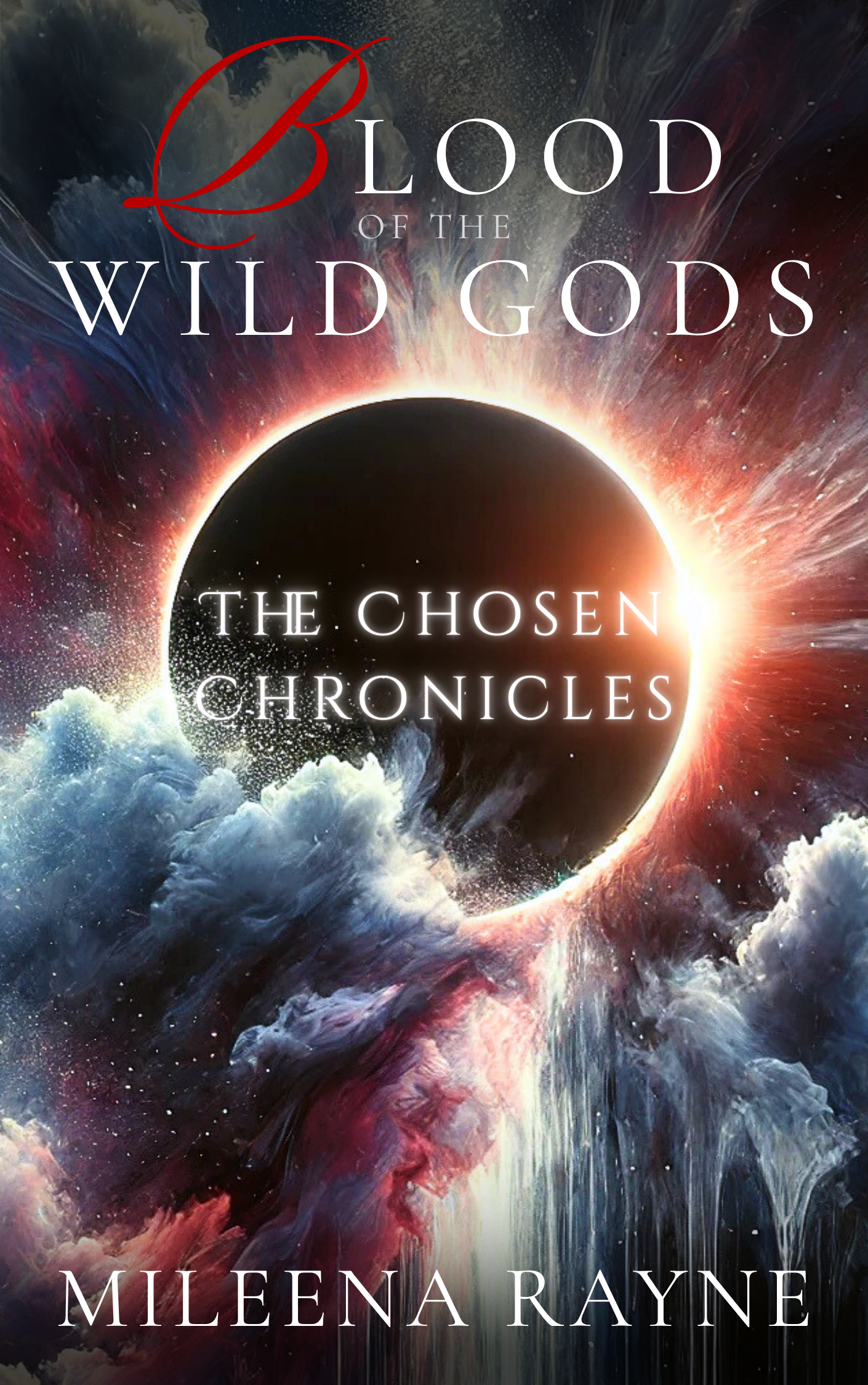
For The Chosen Chronicles omnibus cover, I tried to think about how to make all four covers come into one image, and I’m honestly thrilled with how it turned out. It’s just this clash of everything that happens over the series displayed in one picture: eighteen years of transformation, all that pain and power colliding in a single moment.
The Individual Books
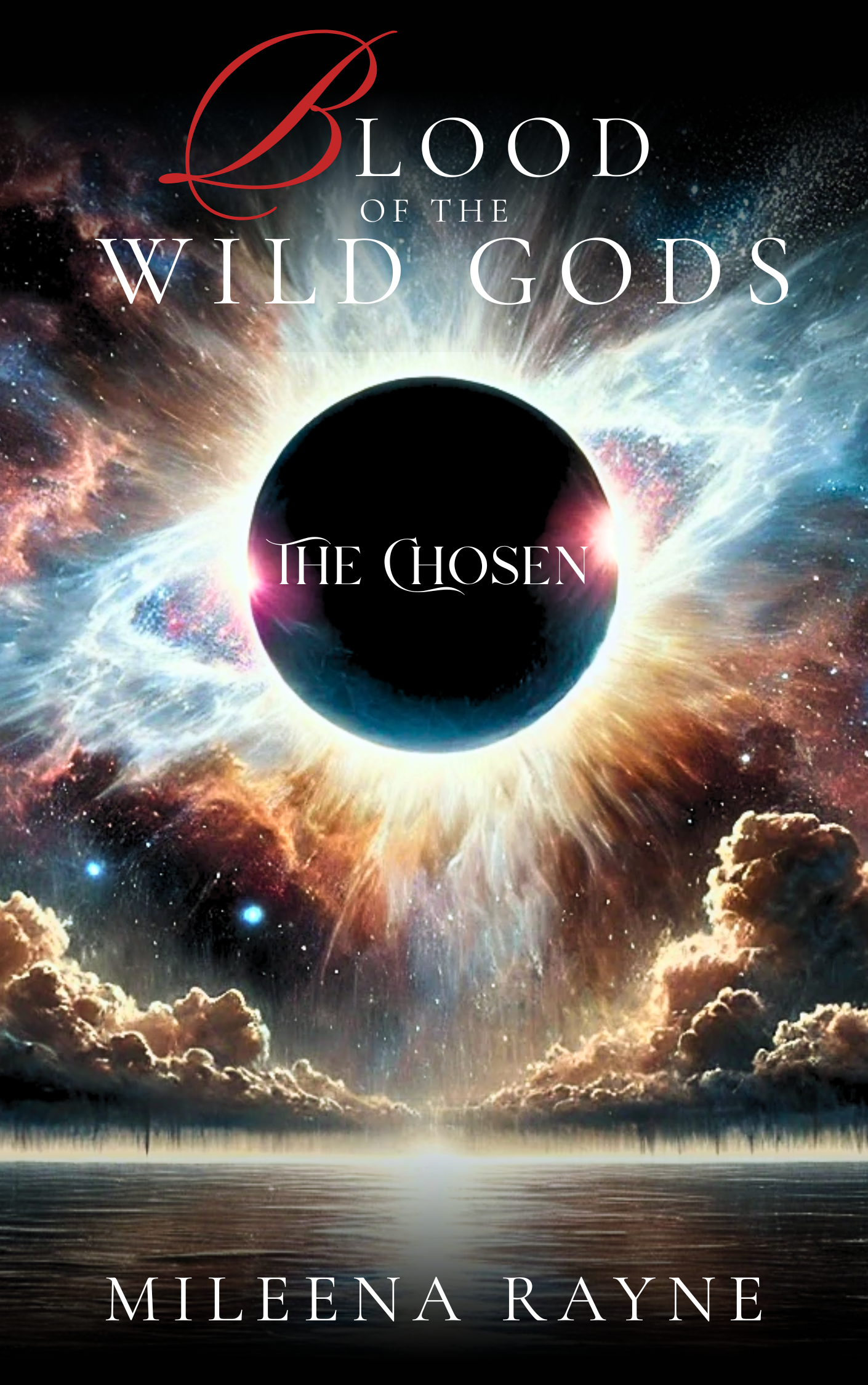
Book One: The Chosen
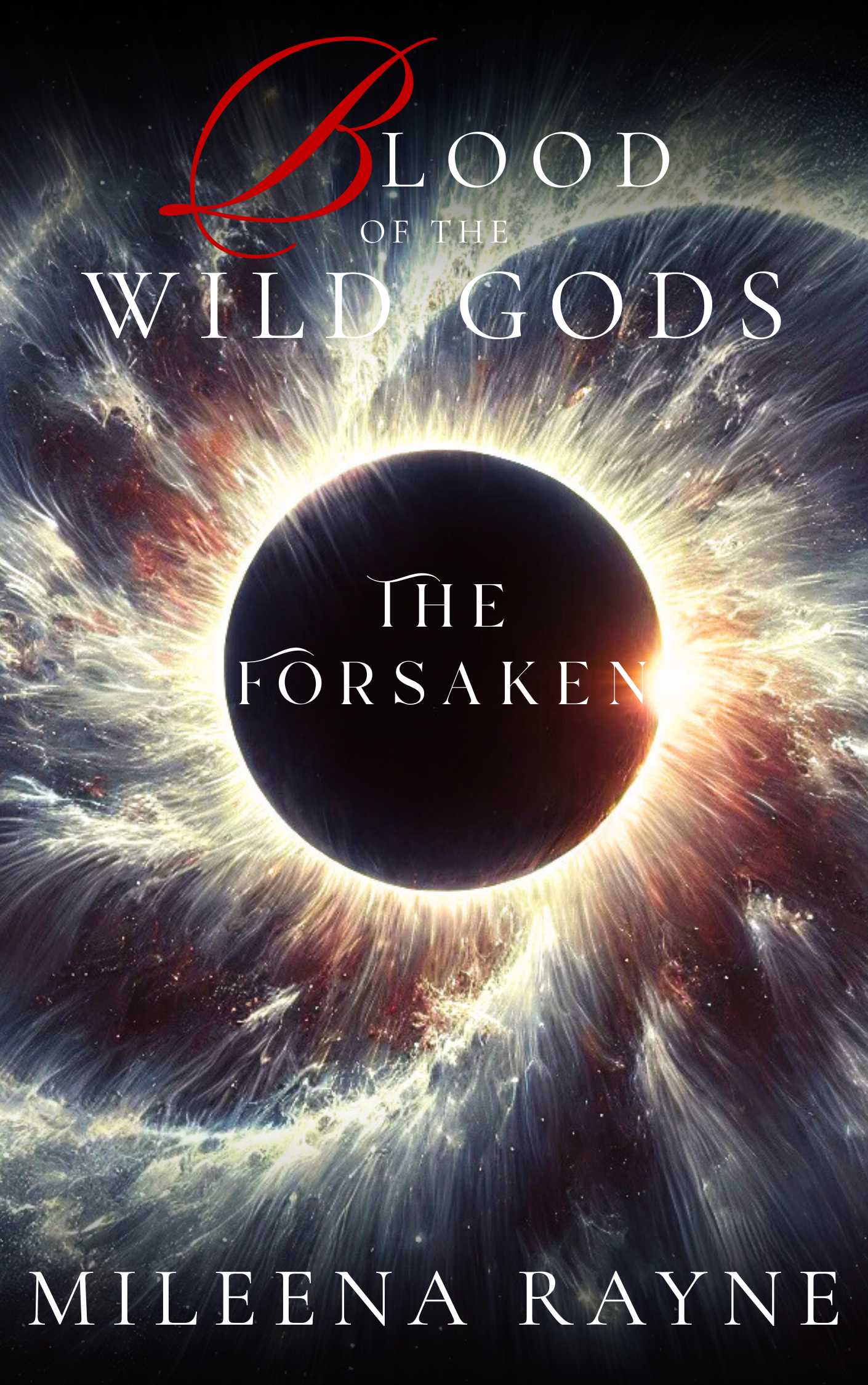
Book Two: The Forsaken
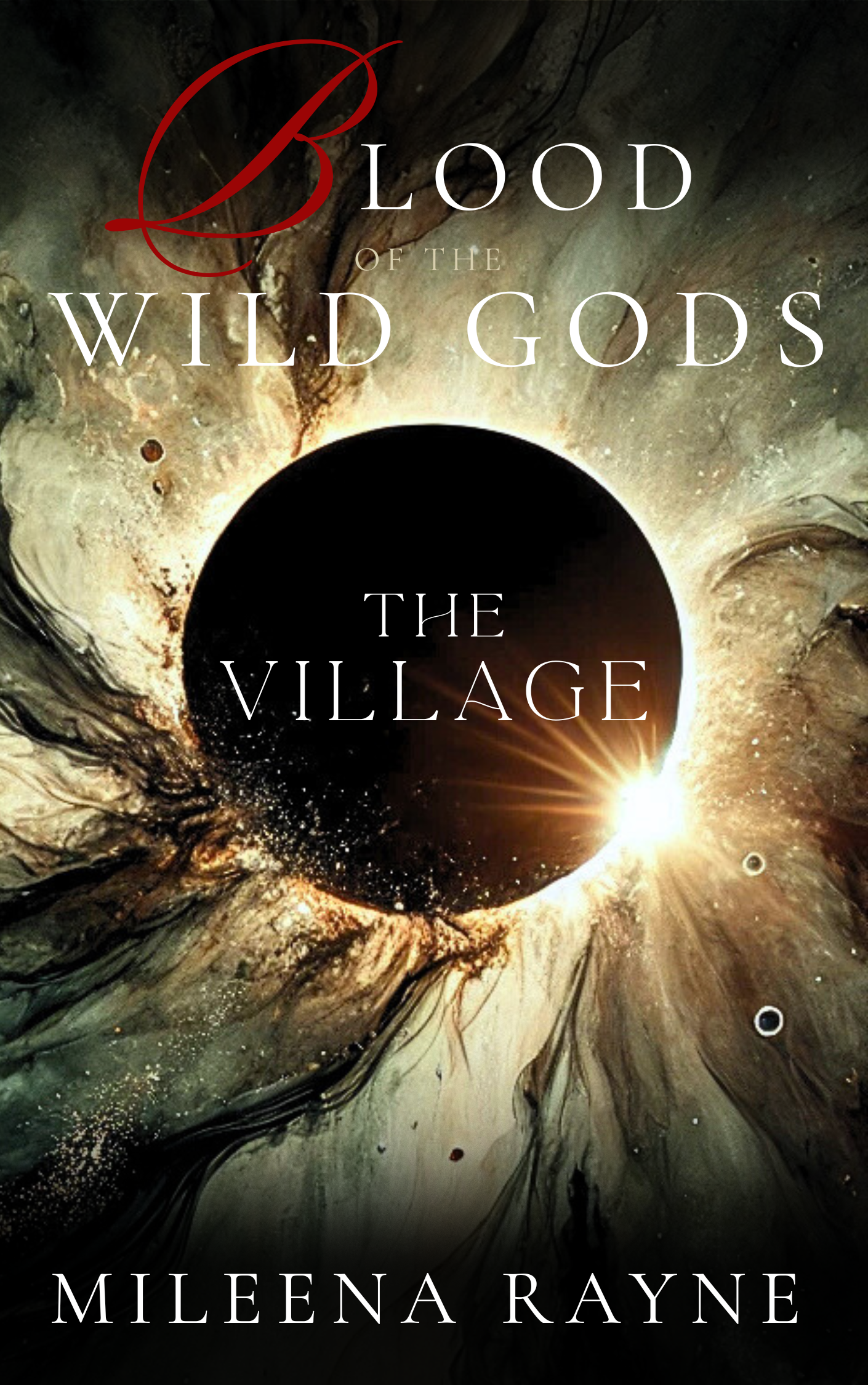
Book Three: The Village
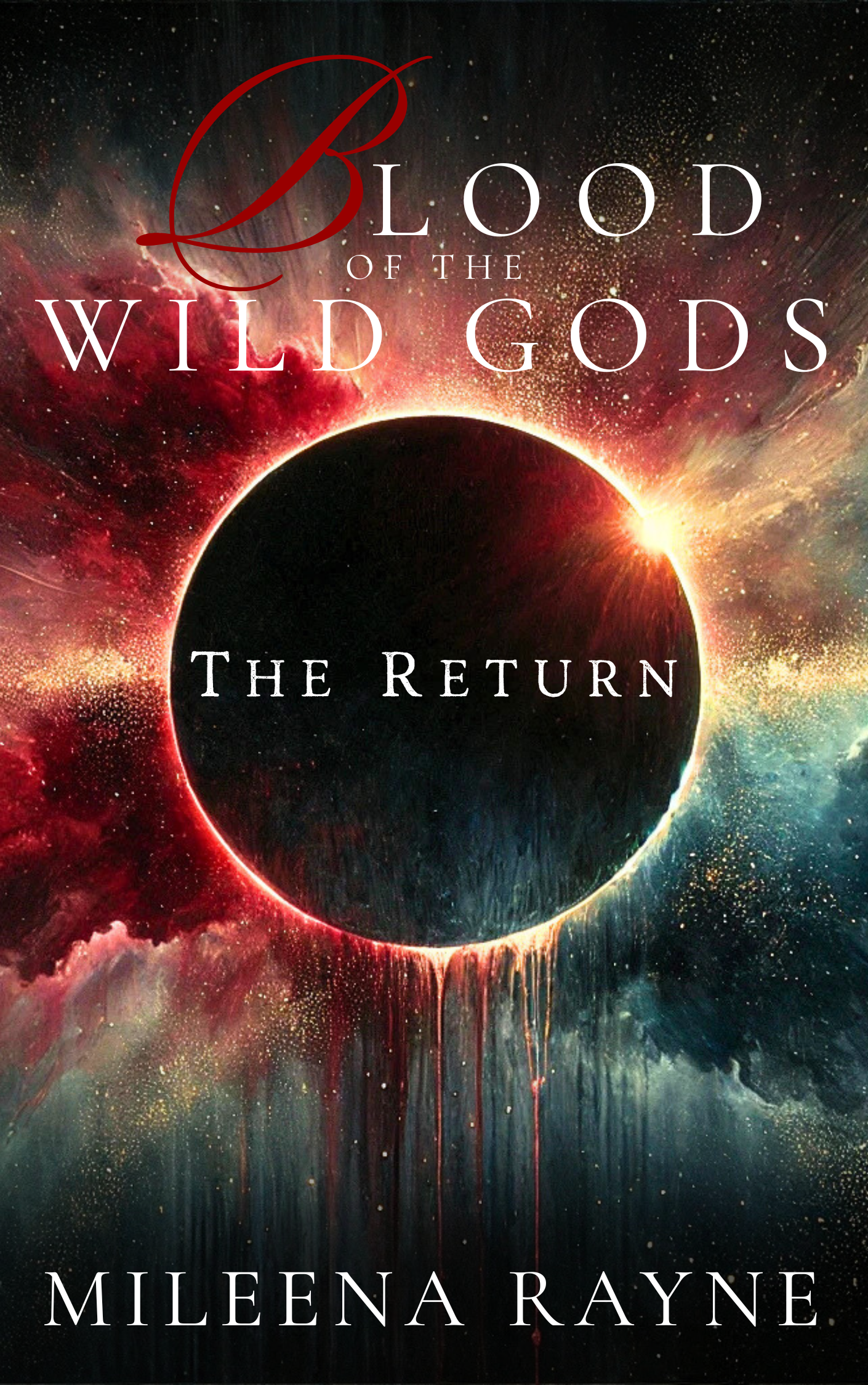
Book Four: The Return
The Chosen went through several variations before I settled on this one, which features art that resembles ocean waves. It had to be this way because of that first chapter where Mira stands on the pier watching her whole world turn upside down, watching the tide of religious extremism sweep in and drown everything she knew.
With The Forsaken, I wanted to capture those cosmic stakes because this is where all the action really starts to happen and we uncover that there’s a lot more at risk here than just one woman’s freedom. The world itself hangs in the balance between void and light.
The Village is more serene. It reminds me of the forest, and it just seems lighter in tone, more peaceful and calm, which is exactly the point of The Village. This is the book where we finally get to breathe. Where healing happens not through battle but through belonging.
In The Return, we see these bold colors clashing and that dripping red paint that’s basically screaming: something big is going to happen in this book, and it might not be pretty. Because let’s be honest, finally fighting back can get pretty ugly. Eighteen years of suppressed rage doesn’t come out clean.
Each cover tells its piece of the truth. Together, they map the long road from drowning to breathing to thriving to fighting.
Want to explore the full world of The Chosen Chronicles? Discover the complete series details, character profiles, world-building, and start reading at The Chosen Chronicles main page.
The Chosen Chronicles is my truth dressed in fantasy clothes, my trauma transformed into magic, my survival story stretched across eighteen years and four books. If you’re ready for fantasy that doesn’t let you escape reality but forces you to examine it, start reading Chapter 1 of The Chosen. But know this: once you start seeing the patterns, you can’t unsee them. And maybe that’s exactly the point.